Firefighting Helicopter Wire Strike
On 17 June 2017, Airbus Helicopters AS350B3+ F-HETH, operated by Sky Helicopteros, took off from Hoyos, in Céceres, Spain at approximately 20:30 to take part in fighting a fire in the town of Garrovilias de Alconétar, 30 miles away. The Spanish accident investigators from the CIAIAC say in their safety investigation report that:
While flying to the fire…the pilot’s area of operations was changed several times, as a result of which he calculated that he would only have time to make two water drops… Once in the area of operations, he…flew to a nearby reservoir to pick up water. After making an initial drop without problems, he returned to the reservoir to pick up more water, but while doing so, the pilot suddenly saw power lines in front of him.
He made an evasive maneuver [banking at 45°] in an unsuccessful effort to avoid striking the power lines. The impact took place at around 21 :29.
The next day [18 June 2017], following a check by the company’s mechanic, the helicopter was flown from the accident site to the Serradilla helicopter base. which was the closest one, for a more thorough check.
…after impacting the cable, the mechanic did a general visual inspection of both the blades and the rest of the helicopter. Specifically, he checked the blades from the ground, and then climbed on the helicopter to inspect them from the height of the leading edge. The mechanic was not looking for a small defect, but rather for a potential mark left by a cable cut by the blade. He therefore thought that the distance from which he did the visual check was adequate for this task. As a result, he did not inspect the blades from a short distance. He identified some damage, including a slight dent to the tip of one blade (yellow blade) which he considered minor. He did the tasks in the AMM for the cable cutter and the yellow blade and he issued a Return to Service Certificate. Later, on 20 June 2017, after having operated normally since the day of the accident, the company’s mechanic saw some marks on one blade (the blue blade) that seemed to have been caused by the impact with the lines.
These impact marks had not been detected earlier. The maintenance mechanic concluded that the blade had to be replaced, and the helicopter was grounded. On 27 June 2017, the blue blade was replaced and the aircraft was returned to service, after which it operated normally.
Observations
On the first run the helicopter picked up water north east of the cables and they were behind and out of sight. On the second run the helicopter approach further south, where the cables were in an area in shadow as the sun was low.
The pilot commented that:
- The lines were close to the ground. Normally power lines are higher up. He could not see the power line towers during the reconnaissance flight of the area due to the low light and to the large amount of smoke that was being dispersed by the swirling wind. He thought he would have been able to make out the power lines if it had been earlier in the day.
- He was flying alone. Having a copilot could have helped’in that situation, since these are high-workload operations. He stated that in regions like Catalonia, a copilot is always on board, regardless of the helicopter’s weight.
- In the CRM courses, pilots are told about operational safety and controlling self-pressure. He admitted that he could have placed pressure on himself in this case, although the regional government did not pressure him to go out or to make a certain number of water drops at any point. He acknowledged that regional officials are increasingly aware that aerial resources cannot always operate.
- He stated that other regions, like Asturias, have prepared maps with information on power lines, windmills, etc. Specifically, he noted that Asturian officials are very mindful of identifying obstacles that can affect aerial assets.
- He is a flight instructor, thanks to which he considered himself ready to respond to emergencies. He did not release the water bucket, as is taught in emergency training, since he focused on flying the helicopter. He thinks that the actions he took saved his life.
The CIAIAC note that the Apical wire strike protection system fitted had successfully lessened the damage of contact with the 116mm² electrical cable. CIAAIC have recommenced that municipalities contracting firefighting helicopters require wire strike protection in their contracts.
Cause
The CIAIAC concluded that this accident was caused by”the execution of a water loading maneuver in an area that had not been previously reconnoitered”.
Contributing Factors
- The low visibility at the accident site.
- The failure to reconnoiter the water loading area.
- The absence of lights on the power lines in the reservoir, which was likely to be used in water loading operations.
Other Safety Resources
Other Wire Strike Occurrences
On 27 October 2018 a Bell OH-58, N1032F (call sign ‘Raven’), of Washoe County Sheriffs Office in Nevada, again equipped with cable cutters, survived a wire strike while carrying Secret Service agents in support of a Vice Presidential visit. The French Le Bureau Enquêtes Accidents pour la sécurité de l’aéronautique d’État (BEA-É) has recommended that the French Navy fit WSPS to all their helicopters after the loss of an Aérospatiale SA 319B Alouette III in New Caledonia on 31 January 2017. On the same day we published this article the US Air Force (USAF) releases the investigation report into a Sikorsky HH-60G Pave Hawk helicopter 92-6466 that struck a wire at night and impacted the ground near Al Qaim, Iraq, 15 March 2018 killing 7 persons on board. The USAF said in a press release:
The mishap occurred during a mission to preposition a helicopter formation to a landing zone closer to the vicinity of ground operations. The investigation concluded that the pilot misinterpreted aircraft navigation displays, which caused the formation to overfly the intended destination. As a result, the aircraft descended into an unplanned location, striking a 3/8-inch diameter galvanized steel cable strung horizontally between two 341-foot high towers. The cable quickly entangled in the HH-60G’s main rotor assembly resulting in catastrophic damage and an unflyable condition.
Contributing factors were:
- mission planning created a route of flight which enabled navigation beyond the intended landing site
- breakdown in CRM
- low illumination conditions that rendered NVGs insufficient to detect the cables.
This aircraft was fitted with a WSPS. The investigators say:
Protection is provided against horizontal strung wire at 60-90 degrees to the flight path by cutting or deflecting the wire without exceeding the structural criteria, by cutting or deflecting, as applicable, a wire up to 3/8 inch diameter, 1×7 strand steel cable having an ultimate strength of up to 11,000 pounds [sic: 11k lbf = 49kN]. The WSPS was not effective because it does not appear that the wire was pulled into any of the WSPS cutters or deflectors.
The investigators make no comment on the failure to catch the cable but they do note that the cable, when tested, has a tensile strength of 14,929 lbf, which was in excess of the deign limit they report for the WSPS in use. Video of another wire strike during fire fighting: https://www.facebook.com/helipressit/videos/936586763160749/ 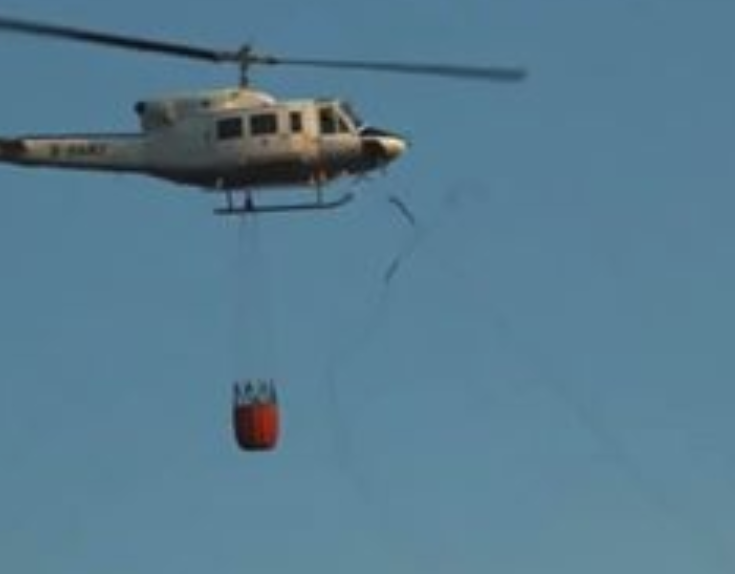 Or this R44 accident in South Africa:
Or this R44 accident in South Africa:
UPDATE 4 April 2019: A Securite Civile EC145 had a wire strike in Martinique that was caught on video. https://youtu.be/4s4bFeoZ1w0?t=2 
Safety Resources
- FAA report: Safety Study of Wire Strike Devices Installed on Civil and Military Helicopters
- A Flight Safety Foundation (FSF) report ‘External Loads, Powerplant Problems And Obstacles Challenge Pilots During Aerial Fire Fighting Operations’ reviewed US accident reports from 1974 to 1998.
Also see our articles:
- Wayward Window: Fatal Loss of a Fire-Fighting Helicopter in NZ
- Fatal Wire Strike on Take Off from Communications Site
- Beware Last Minute Changes in Plan
- UPDATE 1 December 2018: Helicopter Tail Rotor Strike from Firefighting Bucket
- DATE 13 July 2019: Helicopter Wirestrike During Powerline Inspection
- UPDATE 21 February 2020: Fatal MD600 Collision With Powerline During Construction
- UPDATE 2 May 2020: Sécurité Civile EC145 SAR Wirestrike
- UPDATE 30 May 2020: Fatal Wisonsin Wire Strike When Robinson R44 Repositions to Refuel
- UPDATE 26 July 2020: Impromptu Landing – Unseen Cable
- UPDATE 20 September 2020: Hanging on the Telephone… HEMS Wirestrike
- UPDATE 27 December 2020: Fire-Fighting AS350 Hydraulics Accident: Dormant Miswiring
- UPDATE 9 January 2021: Korean Kamov Ka-32T Fire-Fighting Water Impact and Underwater Egress Fatal Accident
- UPDATE 23 January 2021: US Air Ambulance Near Miss with Zip Wire and High ROD Impact at High Density Altitude
- UPDATE 5 March 2021: Wire Strike on Unfamiliar Approach Direction to a Familiar Site
- UPDATE 16 October 2021: South Korean Fire-Fighting Helicopter Tail Rotor Strike on Fuel Bowser
- UPDATE 14 August 2022: Second Time Unlucky: Fatal Greek Wirestrike High-Wire Illusion
- UPDATE 3 September 2022: Garbage Pilot Becomes Electric Hooker
- UPDATE 11 February 2024: Air Ambulance Night Wirestrike at Poorly Chosen Landing Site
UPDATE 28 January 2019: The Bureau d’Enquêtes et d’Analyses (BEA) are investigating an accident in Reunion on 24 January where an Airbus Helicopters AS350B3e/H125 F-OFML appears to have suffered a tail rotor strike on its own under slung firefighting bucket. UPDATE 20 November 2020: Short Sling Stings Speedy Squirrel: Tail Rotor Strike Fire-Fighting in Réunion
The European Safety Promotion Network – Rotorcraft (ESPN-R) has published this video and guidance with EASA:



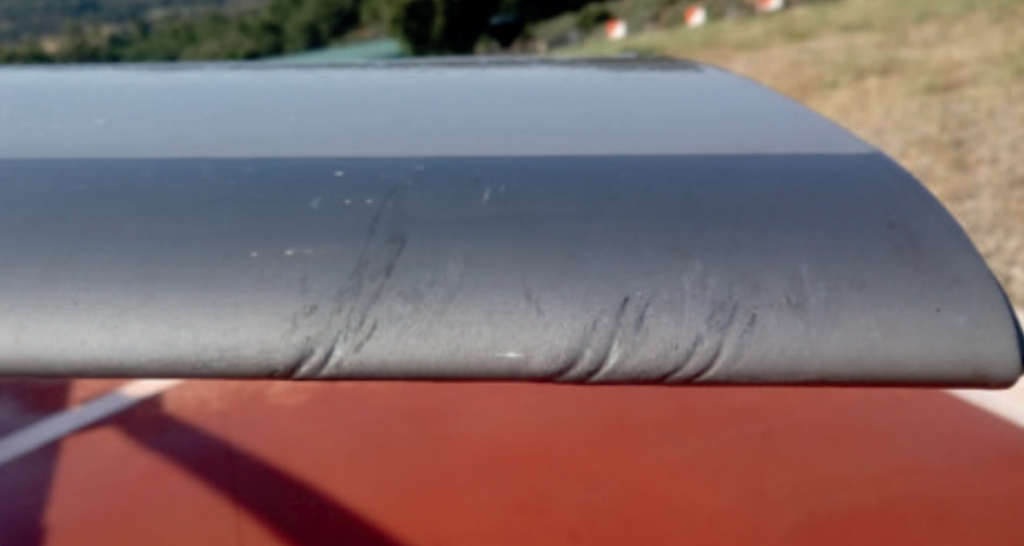
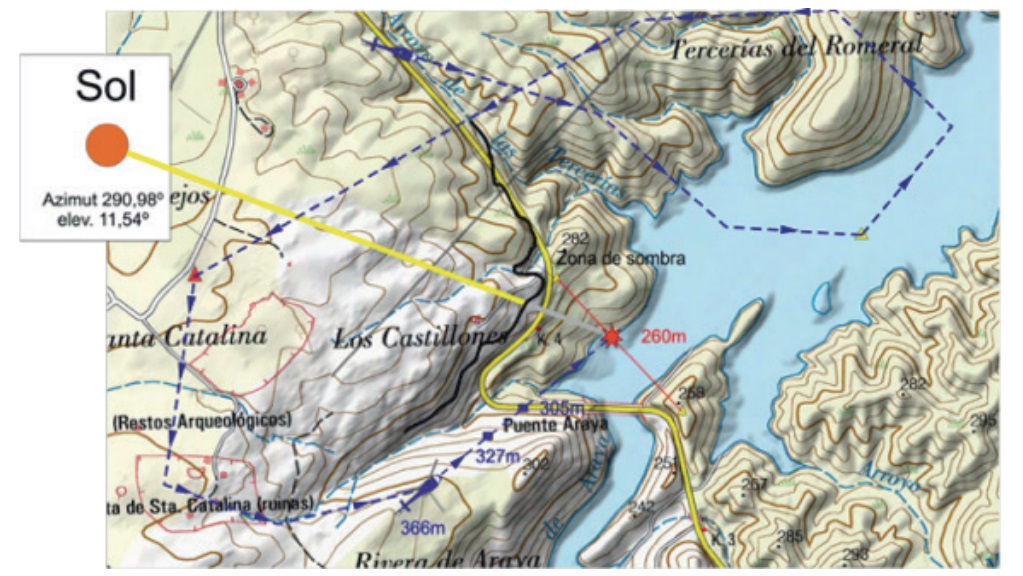
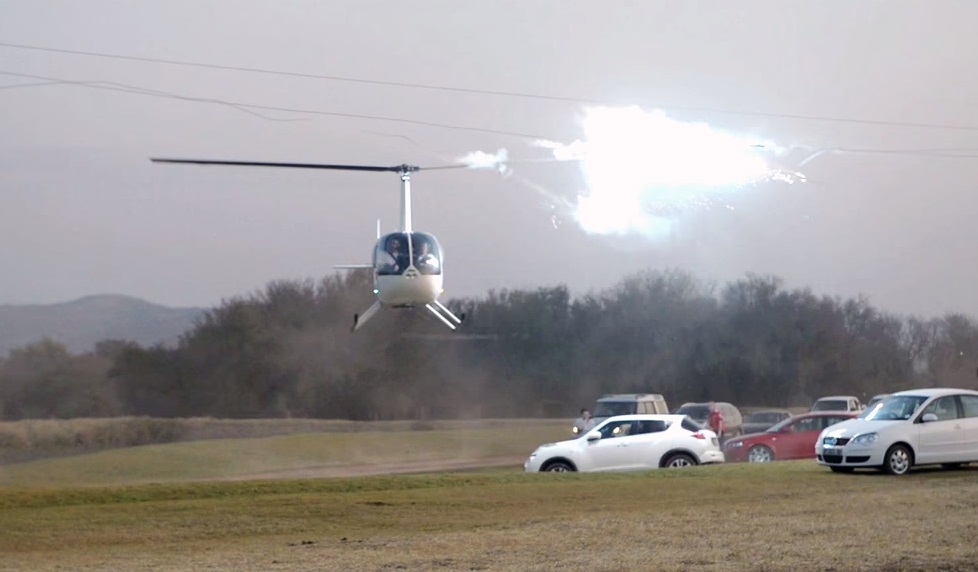
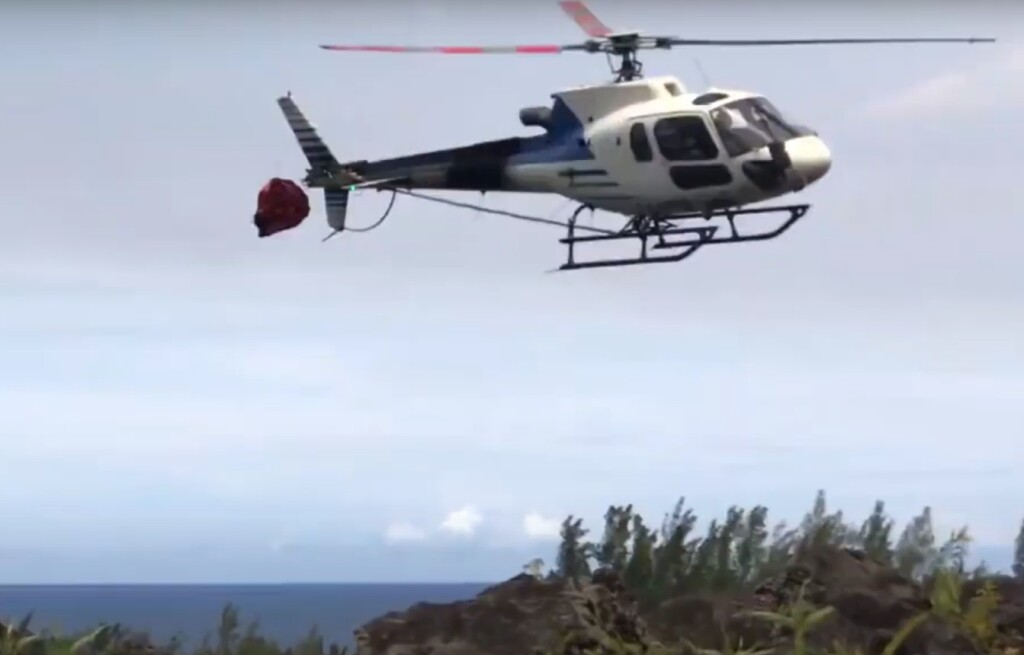

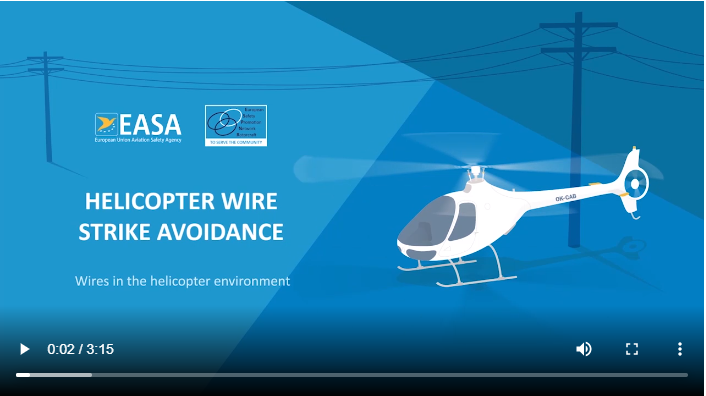
Recent Comments